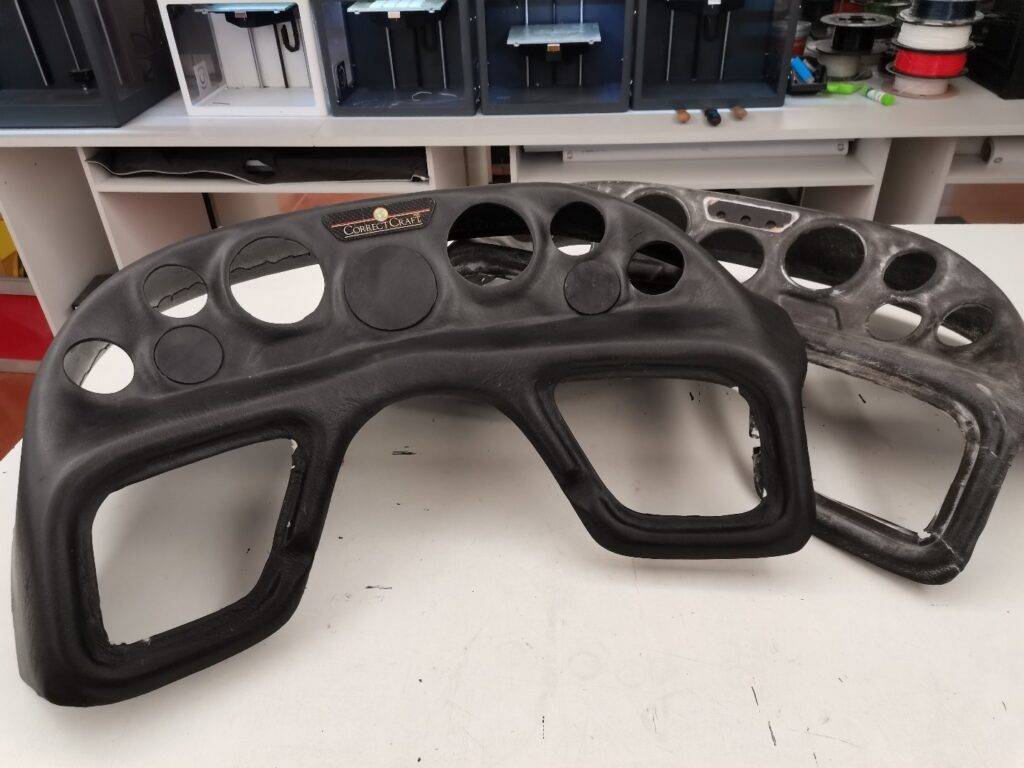With 3D Scanning – Reverse Engineering – 3D Printing
Reconstruction of Old Plastic Parts
Get3D | Professional Solutions for Cars, Boats, Industrial Components
When an old or hard-to-find part from a car, boat, bus or truck is broken, deformed or simply no longer available as a spare part, its reconstruction through 3D technologies is often the most reliable, economical and unique solution.
At Get3D, having many years of experience in restoration and reverse engineering projects, we undertake complete reconstructions of plastic components with precision, high durability and aesthetics similar to — or even better — than the original factory component.
The result is based on three main stages:
3D Scanning
3D Printing
Finishing – Painting – Final Treatment

The process begins with the accurate digitization of the existing part – even if it is cracked, incomplete or damaged.
3D scanning allows us to capture the actual shape, volume and geometry of the object in digital form, creating the basis for reconstruction.
Professional 3D scanning equipment
In our laboratories we use leading 3D scanners:
- Structured Lights (structured light)
- high-precision laser (laser triangulation)
These specific technologies ensure:
- accuracy below 0.1 mm
- stability in large pieces (e.g. dashboards, panels)
- excellent performance on complex surfaces and textures
This allows for the complete digital representation of even complex or large components.
Reverse Engineering & Corrections
At this stage:
- we repair damage
- we reconstruct broken or lost parts
- we create symmetrical geometries
- we optimize the thickness, reinforcements and support points
- we can add new features (e.g. clips, supports, reinforcements)
Digital editing is the most important part of the process, especially when parts of the original object are missing.
3D Printing – The Construction of the New Component
Once the digital design is complete, the component is manufactured through Additive Manufacturing.
Once the digital design is complete, the component is manufactured through Additive Manufacturing.
Choosing the right 3D printing technology is critical, especially for high-stress applications such as:
- exterior plastics exposed to UV
- car dashboard
- engine parts
- marine environment components

FDM (Fused Deposition Modeling)
Ideal for large components and high strength.
We use materials such as:
- PETG → good mechanical behavior
- ASA → UV resistant, ideal for dashboards
- ABS → high thermal resistance
SLA / DLP (Ρητίνες)
Ideal for components that require:
- excellent detail
- smooth finish
- great precision of application
We use durable engineering resins suitable for mechanical applications.
Printing Process
- Converting the STL file into layers (slicing)
- Adjusting rates, temperatures, boosts
- Step-by-step construction of the component layer by layer
- Removing supports and cleaning
At this point the piece is functional, but requires finishing to reach factory quality level.
Finishing – Painting – Professional Aesthetics
Support removal
Sanding
Filler & Primer
Dyeing – Texture Reproduction
Protective Coating
Reconstruction Costs – What you need to know
What differentiates the total cost is reverse engineering:
- 3D scan
- Digital reconstruction
- Broken parts modeling
In projects that require the production of a single piece, the price does not depend on a "pattern"; each project is unique.
The assessment is always individualized.
With an online call with our technical department you can receive:
- full cost analysis
- scanning & design costs
- 3D printing cost
- finishing cost – no hidden charges
At Get3D we work with logic: We take responsibility, guarantee the result and commit to our prices.

